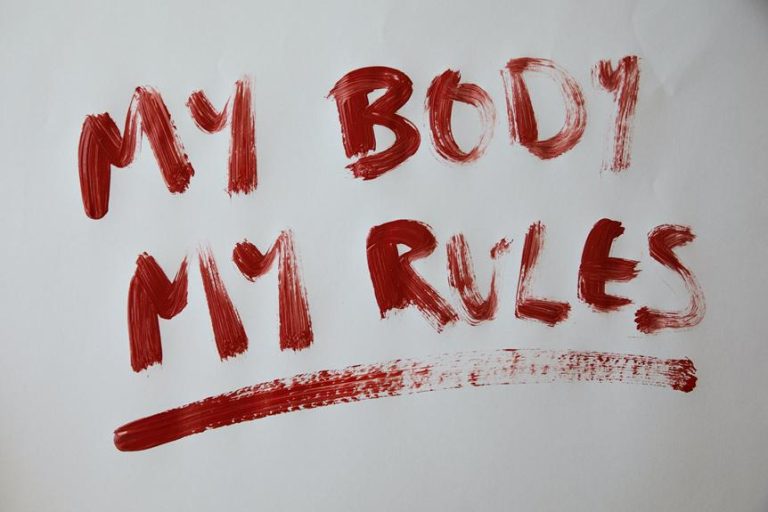Navigating relationships with passive-aggressive individuals requires a nuanced approach that balances assertiveness and understanding. In the realm of interpersonal dynamics, recognizing and effectively managing their indirect behaviors can be key to fostering healthy interactions. This article explores 15 strategic tips designed to unsettle passive-aggressive individuals through subtle yet impactful actions. From ignoring their behavior to strategically calling out their tendencies, each tip aims to provoke discomfort and challenge their manipulative tactics. By mastering these techniques, one can assert boundaries, confront passive-aggressive behaviors, and navigate challenging interactions with finesse.
Ignoring Passive-Aggressive Behavior
In navigating passive-aggressive interactions, one effective strategy is to purposefully ignore the subtle jabs and indirect communication employed by such individuals. By choosing not to engage with their passive-aggressive responses, you can disrupt their attempts at manipulation. Dealing with manipulation in this manner can be challenging but ultimately effective. It involves remaining composed and detached when faced with their behavior, refusing to acknowledge their attempts to provoke a reaction. This approach can help in maintaining your peace of mind and not falling into their manipulative traps. Ignoring passive-aggressive behavior can gradually diminish its impact, as these individuals thrive on eliciting a response. By not providing them with the satisfaction of a reaction, you can weaken their tactics over time.
Calling Out Indirect Actions
By addressing and highlighting passive-aggressive behavior directly, individuals can effectively disrupt the indirect actions and communication tactics employed by such individuals. Dealing with passive aggression requires assertive communication strategies to challenge the passive-aggressive behavior effectively. Pointing out indirect communication techniques, asking for clarification, and highlighting behavior without accusation can make the passive-aggressive individual uncomfortable and less effective in their tactics. By practicing assertive communication, individuals can set boundaries and make it clear that passive-aggressive behavior will not be tolerated. This approach can help in creating a more transparent and open communication environment, discouraging the use of manipulative and indirect methods of expression.
Repeating Annoying Behaviors
Repeating annoying behaviors can be an effective strategy to confront and discourage passive-aggressive individuals from continuing their manipulative tactics. By engaging in role reversal dynamics and mirroring passive-aggressive behavior, you can highlight the absurdity of their actions and potentially push them to reflect on their behavior. Below is a table illustrating examples of how to implement these strategies effectively:
| Repeating Annoying Behaviors | Examples |
|---|---|
| Role Reversal Dynamics | Annoy by asking for repetition, Act confused about their comments, Question their intentions |
| Mirroring Passive Aggressive Behavior | Hold them accountable, Train them that their behavior won’t be tolerated, Act confused about their comments |
These actions can disrupt the passive-aggressive cycle and encourage healthier forms of communication.
Questioning Every Move
To effectively confront passive-aggressive behavior, a strategic approach involves consistently questioning every move made by individuals exhibiting such tendencies. By challenging assumptions and exploring motivations behind their actions, one can disrupt the passive-aggressive cycle. Asking for clarification on decisions, intentions, and behaviors forces them to explain themselves, making it harder for them to hide behind indirect communication. This approach can reveal underlying issues driving their passive-aggressive behavior, potentially leading to a shift in their mindset or behavior patterns. Through probing deeper into their excuses and calling out backhanded compliments, individuals can disrupt the passive-aggressive dynamics and create opportunities for open and honest communication.
Forgetting Responses Purposefully

Purposefully forgetting responses can be a strategic tactic to disrupt passive-aggressive dynamics and challenge manipulative communication patterns. This form of memory manipulation involves selective responsiveness and strategic oblivion, playing mind games to unsettle the passive-aggressive individual. By conveniently forgetting their comments and requests, one can frustrate them by not engaging, making them repeat themselves, and ultimately challenging their manipulative tactics. This approach aims to break the cycle of indirect communication and force the passive-aggressive person to address issues directly. Through this technique, individuals can assert their boundaries, maintain control over conversations, and potentially encourage more transparent and authentic interactions.
Delaying Reactions Strategically
Conveniently delaying reactions to passive-aggressive actions can be a strategic approach to disrupt manipulative communication patterns and assert control over conversations. By employing strategic delays, individuals can effectively navigate interactions with passive-aggressive individuals, allowing for more deliberate and tactical responses. This method can help in maintaining composure, avoiding escalation, and shifting the power dynamics in the conversation. Here is a table to illustrate the benefits of strategic delays:
| Benefits of Strategic Delays | |
|---|---|
| Allows for thoughtful responses | Helps in maintaining emotional stability |
| Disrupts passive-aggressive tactics | Asserts control over the interaction |
| Prevents immediate manipulation | Fosters a strategic advantage |
| Creates a pause for reflection | Enables more effective communication |
| Demonstrates assertiveness | Helps in setting boundaries |
Misunderstanding Their Intentions

Frequently misinterpreting the intentions of passive-aggressive individuals can lead to misunderstandings and strained communication dynamics in interpersonal relationships. Misinterpretation of intentions often occurs when cues are misunderstood, leading to confusion and conflict. Questioning motives and challenging assumptions can help clarify ambiguous behaviors and statements. It is essential to avoid jumping to conclusions and instead seek clarification to prevent escalating tensions. Passive-aggressive individuals may use indirect communication to express their frustrations, which can be misinterpreted if not addressed appropriately. By remaining calm, composed, and open to dialogue, misunderstandings can be minimized, and healthier communication patterns can be established, fostering more positive interactions.
Oversharing Personal Details
How does oversharing personal details impact interactions with passive-aggressive individuals? When dealing with passive-aggressive people, oversharing personal anecdotes or private details can have a specific effect on the dynamic of the interaction. This behavior can be used strategically to provoke annoyance in the passive-aggressive individual.
Impacts of Oversharing Personal Details:
- Sharing Anecdotes: Engaging in excessive storytelling about personal experiences can overwhelm the passive-aggressive person.
- Oversharing Boundaries: Crossing the line by divulging intimate details may make them uncomfortable and irritated.
- Personal Anecdotes: Discussing personal matters extensively may disrupt their passive-aggressive tactics and shift the power dynamic in the interaction.
Excessively Agreeing With Them

When dealing with passive-aggressive individuals, excessively agreeing with their statements and actions can serve as a strategic approach to navigating and potentially disrupting their behavioral patterns. By engaging in role-playing scenarios where you mirror their behavior and responses, you can subtly challenge their passive-aggressive tendencies. This psychological manipulation technique can be effective in revealing their underlying motivations and highlighting the inconsistencies in their communication style. Through excessive agreement, you can prevent them from playing the victim and maintain a sense of control in interactions. Remaining polite and resolute in the face of their manipulation can help you navigate these challenging dynamics and potentially encourage more direct and transparent communication.
Apologizing for Random Incidents
In the realm of passive-aggressive interactions, the strategic tactic of apologizing for random incidents can be a subtle yet effective method to provoke and disrupt the behavioral patterns of individuals exhibiting such tendencies. This approach can have various psychological impacts, creating confusion, irritation, and a sense of unease in the passive-aggressive individual. When utilized in professional settings, apologizing for random incidents can further exacerbate the discomfort, potentially leading to a reassessment of their passive-aggressive behavior.
- Creates Confusion: By apologizing for trivial actions, it can confuse the passive-aggressive person.
- Induces Irritation: Continuous apologies for insignificant matters can irritate and agitate them.
- Elicits Unease: Apologizing for random incidents can make them feel uneasy and uncertain about their actions.
Correcting Their Missteps

Continuing the strategic approach of navigating passive-aggressive interactions, effectively correcting their missteps involves addressing their behaviors with tact and precision. Challenging their behavior requires assertively pointing out inconsistencies and providing factual evidence to counter their incorrect statements. By asserting boundaries and maintaining a courteous tone, you can challenge their behavior respectfully, ultimately leading to their annoyance. To achieve this, it is essential to remain composed and avoid playing into their manipulative tactics. The table below further illustrates effective ways to correct passive-aggressive missteps.
| Correcting Their Missteps | Description |
|---|---|
| Call out incorrect statements | Provide factual evidence to counter their claims |
| Assert boundaries | Maintain a courteous tone while challenging them |
| Remain composed | Avoid playing into their manipulative tactics |
Offering Backhanded Compliments
The art of subtly undermining through veiled praise can be a potent tool when navigating passive-aggressive interactions – Offering Backhanded Compliments. When dealing with passive-aggressive individuals, employing backhanded compliments can be a strategic way to irk them while maintaining a facade of politeness. Some key tactics to master this technique include:
- Subtle Insults: Craft compliments that carry underlying tones of criticism.
- Insincere Praise: Deliberately praise in a way that feels insincere or backhanded.
- Maintain Enthusiastic Eye Contact: Pair your veiled insults with enthusiastic eye contact to emphasize the insincerity of your praise.
Providing Over-the-Top Help

Exaggerated assistance in trivial matters can be a subtle yet effective strategy to provoke annoyance in passive-aggressive individuals. By offering unnecessary aid and providing over-the-top help, you can elicit exasperating gestures and mocking reactions from them. This approach involves stepping in to assist with basic tasks they are fully capable of handling on their own, highlighting their frustration and irritation. Below is a table illustrating how to execute this strategy effectively:
| Exaggerated Assistance Tips | Description | Effectiveness |
|---|---|---|
| Offer help with trivial tasks | Assist with tasks they don’t need help with | Provokes annoyance |
| Provide unsolicited assistance | Be overly helpful when not required | Highlights frustration |
| Ask if they need help unnecessarily | Offer aid with basic tasks they can do themselves | Elicits mocking reactions |
Forgetting to Do Favors
Occasionally neglecting to fulfill requested favors can serve as a strategic tactic in managing interactions with passive-aggressive individuals. Forgotten promises and employing blaming strategies can be effective tools in navigating these relationships. Here are some ways to implement this approach:
- Selective Memory: Choose to conveniently forget about completing tasks they requested.
- Blame Game: Shift responsibility for not fulfilling favors onto external factors like being busy or forgetfulness.
- Non-Commitment: Avoid committing to doing favors in the first place to create a sense of uncertainty.
Blaming Them for Issues
In managing interactions with passive-aggressive individuals, a strategic approach involves highlighting their accountability for issues through effective blame tactics. Blaming accountability can be a powerful tool in dealing with passive-aggressive behavior. By directly addressing the individual and holding them responsible for their actions, it forces them to confront their behavior and the consequences it may have caused. Utilizing direct communication strategies when blaming them for issues can help in promoting transparency and clarity in the relationship. This approach can also serve as a boundary-setting mechanism, making it clear that their passive-aggressive tactics will not be tolerated. By emphasizing their failure to communicate openly and honestly, it can potentially lead to a shift in their behavior patterns.
Frequently Asked Questions
How Can One Effectively Distinguish Between Passive-Aggressive Behavior and Direct Communication in a Person’s Actions?
“To separate the wheat from the chaff, observe actions through a discerning lens. Decipher intentions by embracing direct communication cues. Effective communication unveils the truth amidst passive-aggressive behavior, aiding in understanding and resolution.”
What Are Some Subtle Signs That Someone Is Being Passive-Aggressive Rather Than Openly Expressing Their Thoughts or Feelings?
Recognizing signs of passive-aggressive behavior involves observing subtle cues like sarcasm, backhanded compliments, procrastination, and avoidance of direct confrontation. Dealing effectively requires addressing the behavior calmly, setting boundaries, and encouraging open communication for resolution.
How Can One Maintain Their Composure and Not Get Emotionally Affected by a Passive-Aggressive Person’s Behavior?
Emotional detachment from passive-aggressive behavior involves utilizing coping mechanisms and conflict resolution strategies. Assertiveness training can help maintain composure by focusing on self-regulation and understanding the root of the behavior, fostering resilience and calmness.
Are There Any Long-Term Strategies That Can Help in Dealing With Passive-Aggressive Individuals in a Constructive Manner?
In addressing passive-aggressive individuals, implementing long-term strategies rooted in conflict resolution and effective interpersonal communication is essential. By fostering open dialogue, setting clear boundaries, and promoting assertiveness, constructive interactions can be cultivated, leading to healthier relationships.
How Can One Set Boundaries With Passive-Aggressive People Without Escalating Conflicts or Worsening the Situation?
Establishing effective boundaries with passive-aggressive individuals involves assertiveness, clear communication, and consistency. Conflict resolution techniques, such as active listening and mutual respect, can prevent escalation. Setting boundaries respectfully and firmly can foster healthier interactions and reduce conflict.

















